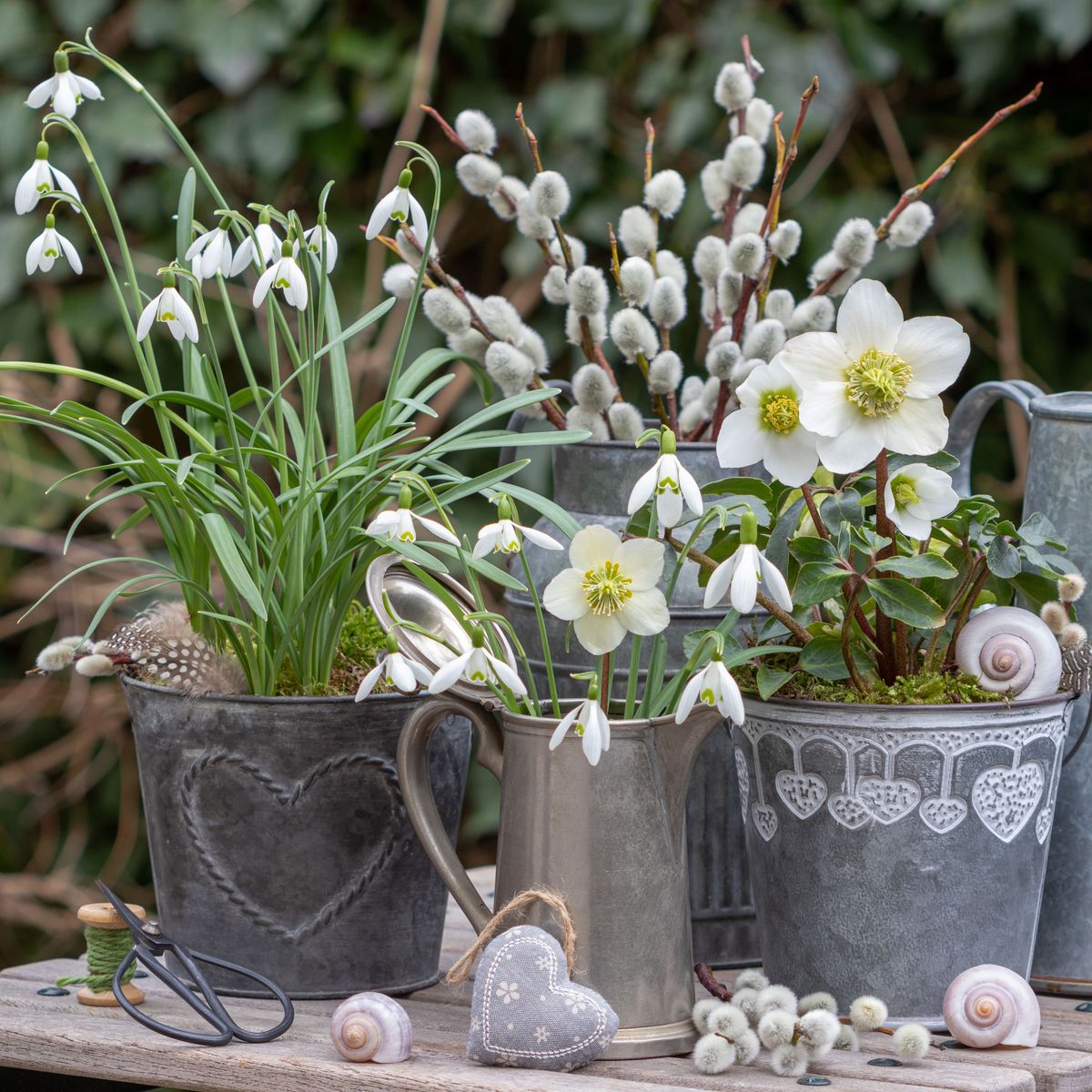
A couple of years ago I met a fascinating woman in her sixties who had made a career as an estate gardener. Working for an assortment of wealthy clients, she spent years weeding, dividing and deadheading her way through all kinds of beds and borders. The work also provided her with opportunities to pursue her interest in garden design. When I met her, she was about to retire. Needless to say, she did not elect to settle down in a planned community with a full-time landscaping crew. She found a charming little town, bought a rambling old house and began renovating its long overgrown garden. I have no doubt that when the time finally comes, my friend will be buried with a trowel in her hand. That probably will not happen for years, however, because like all gardeners, she has so much to do first.
When I asked this consummate gardener how she learned her trade she replied with three words-“old gardening books.” I felt an immediate sense of kinship, as I have my own burgeoning collection of aged volumes. Often full of great writing, they inform me and make me feel connected with the great continuum of gardeners while reminding me that there is very little new under the sun.
For Christmas, my husband gave me Flowers In Britain by the rather whimsically named L.J.F. Brimble (MacMillan & Company Limited, London, 1946). As is often the case with used books, the first page provided a clue about the identity of the volume’s initial owner. Though there is no name on the flyleaf, the inscription reads: “From the Madison Garden Club, April 1946. For a little talk on garden design-with shrubs, bulbs, etc.”
Clearly the book’s owner was no rank amateur. She was probably a local garden designer, or at least a thoroughly seasoned club member with enough expertise to teach others something about design.
In Flowers In Britain, Brimble categorizes common British plants by family, dividing the members of those families into three groups: ornamentals, wild plants, and those with economic importance as sources of food, medicine or fiber. Members of each plant family are portrayed on beautiful color plates and in detailed line drawings. Brimble brought a lot of erudition into the service of botany and horticulture, but he also contributed an ecological perspective that was ahead of its time. Modern environmentalists can agree wholeheartedly with lines he borrowed from poet John Drinkwater’s “Olton Pools: To The Defilers”:
“When you defile the pleasant streams,
And the wild bird’s nesting place
You massacre a million dreams
And cast your spittle in God’s face.”
There is less poetry, but much practical information in Norman Taylor’s The Permanent Garden (D. Van Nostrand Company, Inc., Toronto, New York and London, 1953). “Without trees and shrubs,” says the author, “it is impossible to create gardens.” This sounds obvious, but generations of gardeners have ignored that wisdom and their gardens suffered for it. Taylor’s book has lengthy discussions of how to site trees, which trees to pick for specific purposes, and how to avoid common mistakes. The author points out things that many novice homeowners don’t think about, such as the fact that a flowering, fruiting tree placed too close to the house will gum up the gutters with debris. He also warns against perils that are with us still, saying,
“Don’t make the common mistake of letting some landscape contractor put in a lot of so-called ‘foundation planting.’ Examples are too common of windows and porches being smothered by shrubs and trees that have no place in such planting.”
Looking around my neighborhood, I can see many reasons for reprinting Taylor’s fifty-year-old volume.
As much as I love English garden writers, one of the best books in my collection of oldies is Old Time Gardens (MacMillan & Company, New York and London, 1902) by prolific American author Alice Morse Earle (1851-1911). Mrs. Earle, a native of Worcester, Massachusett, was an authority on Colonial America, producing books on customs, costumes, and crime and punishment as well as gardens. Her research was so thorough that many of those books are still in print. Old Time Gardens is not among them, and it is too bad, as her descriptions of significant gardens all over America are well worth the price of the book.
Like all good garden writers, Mrs. Earle is free to air her prejudices. She loves box hedges, blue gardens and Viola tricolor, which she calls by one of its common names, “Ladies’ Delight.” She dislikes spotted plants such as Pulmonaria, and states that “few persons would care for beds of all white flowers.” The latter quote makes me wonder what she would have thought of the white-flowered garden masterpiece that another great writer, Vita Sackville-West, created at Sissinghurst Castle later in the century.
Old Time Gardens makes wonderful bedtime reading, especially in winter, because each chapter can stand alone. History and poetry are mixed into every chapter long with the plant lore and traditions. The book is especially poignant because many of the historic gardens that Mrs. Earle described have long since disappeared.
So If your travels take you to used bookstores or antique dealers during this garden “off season”, find your way to the garden books. You may discover some enlightening old ideas set forth by authors who will become new friends.
Yellow Rose
SWORD LILIES
CHANGE IN THE GARDEN
UNFORGETTABLE
FRESH VEGGIES











